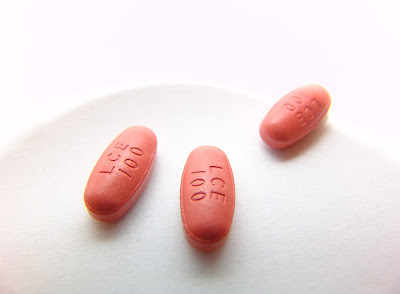Understanding Levodopa Therapy for Parkinson's Disease
 |
| Levodopa |
Parkinson's disease is a progressive neurological disorder that impacts movement. It occurs when specific nerve cells in the brain gradually deteriorate over time. These nerve cells produce dopamine, a chemical messenger that helps coordinate movement. When the nerve cells become impaired and can no longer produce enough dopamine, Parkinson's motor symptoms appear. Levodopa therapy aims to help restore dopamine levels and manage Parkinson's motor symptoms.
What is Levodopa?
Levodopa, also known as L-DOPA, is the primary medication used to treat the
motor symptoms of Parkinson's disease. Levodopa acts as a dopamine precursor,
meaning it can enter the brain and be converted directly into dopamine once inside
dopamine-producing nerve cells. When dopamine levels decline in Parkinson's,
levodopa supplementation helps boost levels and provide symptomatic relief.
Levodopa is
considered the gold standard initial treatment for Parkinson's disease due to
its effectiveness in managing motor symptoms like tremor, rigidity, slowness of
movement and impaired balance/coordination. However, levodopa is not a cure -
it only treats symptoms and its benefits lessen over time as Parkinson's
progresses. The drug must be taken regularly via pill, capsule or liquid
suspension to maintain therapeutic levels.
How Does Levodopa Work?
Once levodopa is ingested, it crosses the blood-brain barrier and enters
dopamine-producing nerve cells in the substantia nigra region of the midbrain.
Inside these cells, levodopa is converted to dopamine by the enzyme dopa
decarboxylase. The newly synthesized dopamine can then bind to dopamine
receptors in the striatum, restoring motor coordination and movement through
stimulation of the basal ganglia motor circuit.
When first starting levodopa, most people experience a significant improvement
in Parkinson's motor symptoms within 30-60 minutes that peaks 1-2 hours after
the dose. However, response and duration of benefit varies based on individual
factors like age, disease severity and other medications used. Over time,
levodopa effectiveness decreases as Parkinson's progresses due to ongoing
dopamine cell loss.
Optimizing Levodopa Therapy
To maximize symptom control and minimize side effects, levodopa must be
carefully optimized for each individual. Doctors closely monitor how patients
respond to different doses, formulations and schedules. Sustained-release
preparations spread levodopa absorption over several hours to smooth out
fluctuations. Some also take fast-acting regular levodopa every 2-4 hours to
tackle sudden return of symptoms, or when extra control is needed.
Carbidopa or benserazide are usually administered alongside levodopa. These
drugs inhibit the peripheral conversion of levodopa to dopamine, allowing more
levodopa to pass through to the brain. This boosts levodopa's efficacy and
reduces nausea from peripheral dopamine stimulation. Optimal doses may differ
by individual and also change over time as Parkinson's progresses. Careful dose
adjustments are crucial to balance benefits and side effects.
Common Levodopa Side Effects
While levodopa effectively controls Parkinson's motor symptoms at first,
long-term use comes with risks of side effects. The most prevalent include:
- Dyskinesias: Involuntary writhing movements caused by excess dopamine levels.
Risk rises with longer levodopa use and higher cumulative doses.
- Motor fluctuations: Sharp switches between "on" periods of mobility
and "off" periods where symptoms return. Fluctuations start within 5
years for most and worsen with time.
- Nausea: May occur when starting or adjusting levodopa. Taking
carbidopa/benserazide helps reduce nausea incidence.
- Dizziness: Especially upon standing due to alterations in blood pressure.
Starting low and going slow with levodopa dose increases helps minimize this.
- Sleep disturbances: Difficulty falling asleep or staying asleep. Optimizing
medication timing may provide relief.
- Hallucinations and psychosis: Rare side effects even at high levodopa doses
seen in advanced disease.
Managing side effects like dyskinesias, fluctuations and psychiatric issues
usually means optimizing other Parkinson's drugs alongside levodopa
adjustments. Alternative treatment options may also be explored if uncontrolled
side effects disrupt quality of life.
The Future of Levodopa Therapy
Currently, new modified or extended release levodopa formulations are being
trialed to better counter fluctuations and side effects from the standard acute
dosing approach. These include subcutaneous or patch delivery systems for
continuous levodopa absorption. Gene therapies are also under investigation
aiming to restore dopamine synthesis in the brain independently of levodopa
intake.
While highly effective initially, levodopa's long term benefits reduce as
Parkinson's progresses due to ongoing neurodegeneration. Further prolonging its
useful action remains an important goal in Parkinson's research. Optimizing
current levodopa regimens through customized dosing, supplementing with other
drugs, and developing advanced formulations all continue playing crucial roles
in managing this difficult-to-treat condition. Overall, levodopa therapy
currently represents the best available symptomatic treatment option for most
Parkinson's patients.
Get More Insights on Levodopa



Comments
Post a Comment